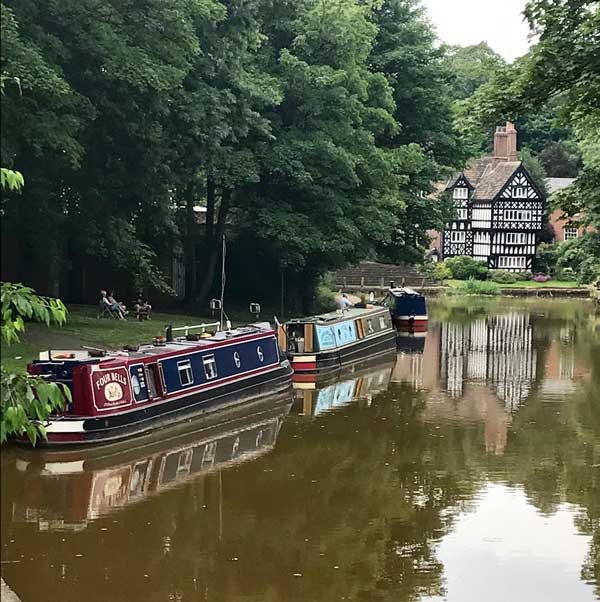Observations from a far off place
Jul 01, 2017
We have recently been refreshing our attitude with travels in the lush and green byways and narrow lanes of rural England. With ample time to ponder as we pedal two wheels, the concept has been to ride the countryside, staying off major roads as much as possible. With the aid of a GPS this has taken us well off any beaten track, and down narrow lanes, canal paths, old railway tracks and bridle paths.
Many of the rural lanes are barely wide enough for one car. This often necessitates one vehicle backing up when there is opposing traffic. At times there is room for a bicycle and a car to pass. But definitely not a combine harvester and a bicycle. In an effort to display colonial courtesy on one occasion we pressed ourselves , and said bicycle, into the lush greenery on the side of one such lane to let traffic past. That courtesy was not to be repeated, as we quickly and painfully learned that part of the lush greenery was in fact stinging nettles.
Traffic overall on these lanes is most courteous. But the level of courtesy varies. England is a very class conscious society, and this evidently is reflected in the cars people drive. Generally drivers of small Toyotas and Vauxhalls and Nissans are content to slow up and wait for a lay by to pass. Young men on large tractors will speed up and try to squeeze by even when there is no room to squeeze by. Men in convertibles with a child bride by their side are easily the most courteous. They see you at a distance, stop and wait. But beware the blonde in the Range Rover. Always a black Range Rover. These blondes know their aristocratic ownership of the road and will assert it.
Travelling the English countryside reminds us of similarities and differences. We may all speak the same language – albeit with a somewhat different accent – but much else is different. Small fields with hedgerows and small herds of EU subsidized dairy cows tell a story of a land that is very different from ours, and contains sharp divisions. The countryside is still very traditional. Save for Polish building workers, the immigration so obvious in the cities, is not apparent in the country.And the North, as was evidenced in the Brexit vote, is a massively different place to the South.
Our route has taken us through and past numbers of industrial estates. Whilst often we might think of English industry in terms of the very dreary and dark mills portrayed on television, the reality is that there are many purpose built industrial estates on the outskirts of towns and cities. The older industrial buildings stand out for their extensive use of what appears to be asbestos based roofing and cladding. Far more than we would see in New Zealand. But many of the newer industrial estates are characterized by plenty of green space and ample parking. The features most apparent are the lack of windows on most warehouses and factories, and the minimal office space. Whereas it was not so many years ago that 20 to 25% office space was acceptable to us , many of the newer buildings in the UK would now be very much less than 10%. With the advances in technology this makes a lot of sense. Perhaps we need to change our thoughts on such ratios? Already we have far too many buildings well over-officed.

Recently Posted
- A changing market
- Apr 09, 2024 - Same, same and more same
- Apr 02, 2024 - New Year, New Attitude
- Jan 15, 2024 - Reflection and Anticipation
- Dec 18, 2023 - State of the Nation
- Nov 27, 2023